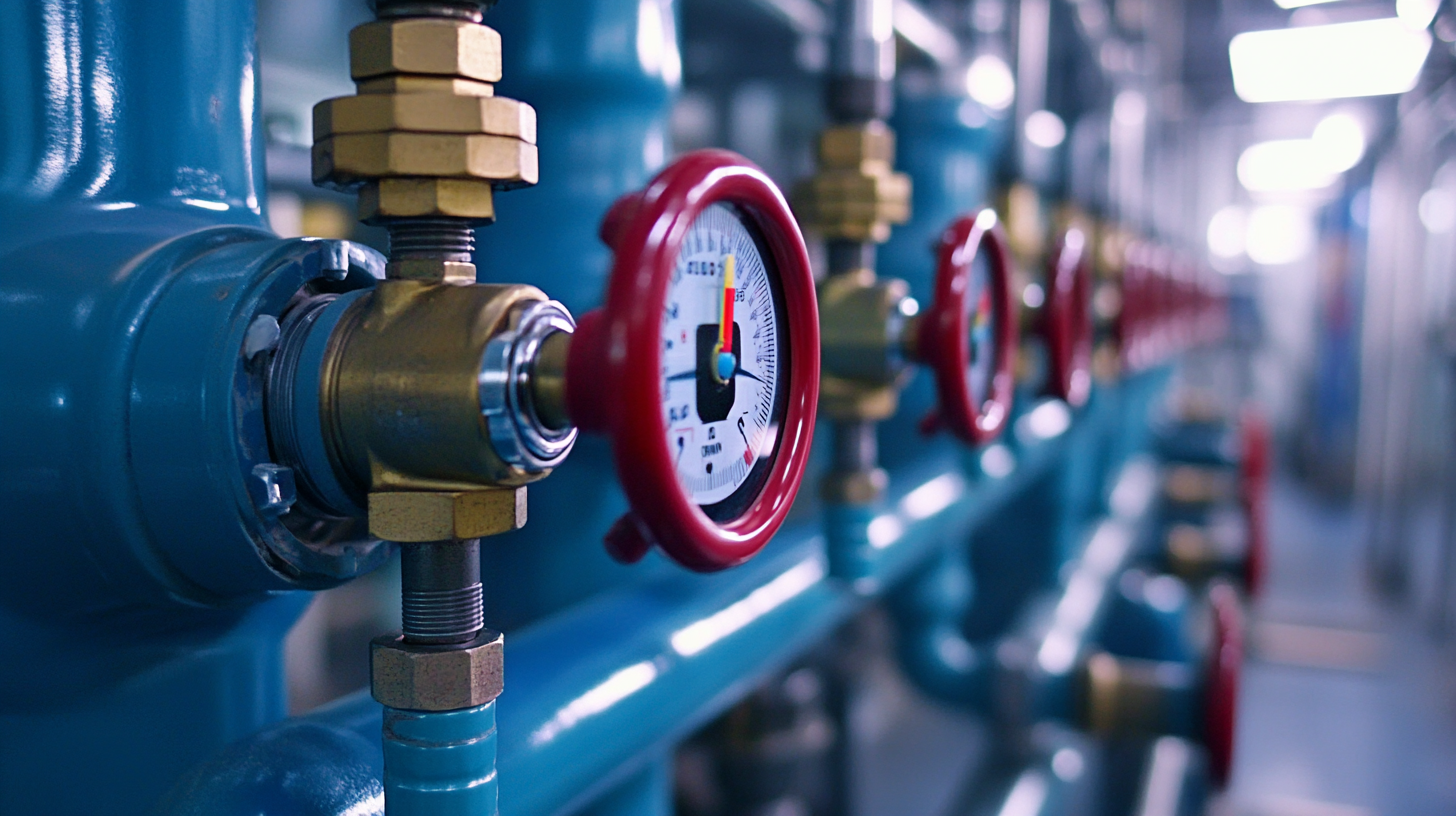In an era where precision and efficiency are paramount, the demand for high-quality Temperature Control Valves has surged across various industries, from manufacturing to HVAC systems. According to a recent market analysis by Research and Markets, the global temperature control valve market is projected to reach $5.8 billion by 2027, growing at a CAGR of 6.2% over the forecast period. This escalating demand underscores the critical role these valves play in maintaining optimal operational conditions, enhancing energy efficiency, and reducing costs. China, with its robust manufacturing capabilities and commitment to quality engineering, has emerged as a key player in this sector. By harnessing cutting-edge technology and stringent quality control measures, Chinese manufacturers are not only meeting global standards but also setting new benchmarks in the industry. This ultimate guide delves into the factors that contribute to the success of China's temperature control valves, offering insights into how they are revolutionizing industrial applications worldwide.

As the temperature control valve manufacturing industry evolves, key trends are set to shape its future by 2025. A recent report by MarketsandMarkets estimates that the global temperature control valve market will grow from $3.5 billion in 2020 to approximately $5.1 billion by 2025, driven by the increasing demand in sectors such as HVAC, food and beverage, and pharmaceuticals. The rise in smart technology integration and the emphasis on energy efficiency are pivotal trends that manufacturers must closely monitor.
One emerging trend is the mobilization of IoT in temperature control systems, allowing for more precise temperature management and monitoring capabilities. Industry experts suggest that 2025 will see a significant increase in smart valves, which are expected to improve operational efficiencies by 30% or more.
**Tip:** To stay competitive, manufacturers should consider investing in R&D for smart valve technologies and focus on sustainability practices. Companies adopting eco-friendly materials and processes will likely attract environmentally-conscious clients and enhance their market position.
In recent years, China has solidified its position as a global leader in the temperature control valve export market, driven by robust manufacturing capabilities and an increasing demand for efficient thermal management solutions.
According to a report by Research and Markets, the global temperature control valve market was valued at approximately $5.6 billion in 2020 and is projected to grow at a CAGR of 6.5% through 2027. China's contribution to this growth is significant, with its exports accounting for over 30% of the total market share. This dominance can be attributed to the country's advanced engineering practices, skilled workforce, and investments in technological innovations.
Moreover, with tightening industrial regulations and a global push for energy efficiency, the demand for high-quality temperature control valves has surged. The International Trade Centre highlights that China's exports of these valves have not only increased in volume but have also improved in quality. Enhanced features such as real-time monitoring and advanced automation technology are now standard in many products. As industries worldwide seek reliable and efficient solutions for temperature control, China's engineering excellence stands out, positioning it as a prime supplier in the international market.
In the realm of engineering, technical innovations play a crucial role in enhancing the performance and reliability of temperature control valves. These advancements are not merely incremental; they represent a significant leap in our ability to manage temperature fluctuations in various industries. China's premier temperature control valves have incorporated state-of-the-art technologies, such as advanced materials and electronic control systems, which ensure precise regulation of temperatures and improve energy efficiency.
Moreover, the integration of smart technology and IoT capabilities has revolutionized how these valves operate. Real-time monitoring and automated adjustments allow for unprecedented accuracy, ensuring that processes remain within optimal temperature ranges. This not only enhances operational efficiency but also contributes to significant cost savings and reduced environmental impact. With such innovations driving quality engineering, China's position as a leader in manufacturing high-performance temperature control valves is firmly established, setting the stage for global success in various applications, from HVAC to industrial processes.
Implementing temperature control valve systems is crucial for various industries, particularly when ensuring product quality and safety. A recent focus on best practices has shown that temperature control in bioreactors significantly influences cell health and productivity. In modern biologics, maintaining precise temperature conditions can optimize yields, making it an essential aspect of the production process.

Tips for Effective Implementation:
Moreover, industries like dairy processing have benefited from advancements in valve technology. By choosing specialized pumps and valves that enhance operational outcomes, processors can achieve better energy efficiency and product consistency, ultimately leading to significant cost savings.
The temperature control valve market is poised for significant evolution by 2025, driven by increasing demands for energy efficiency and precision in various industries. However, players in this sector will confront key challenges, such as rapidly changing regulations and the need for innovative technologies. To stay competitive, companies must invest in research and development, ensuring that their products not only meet regulatory standards but also exceed customer expectations.
Tip: Utilize predictive analytics to forecast market trends and tailor your product development accordingly. This approach can help you stay ahead of competitors and align your offerings with future demands.
Another challenge is the integration of smart technology into valve systems. As industries embrace the Internet of Things (IoT), temperature control valves must adapt to become more interconnected and user-friendly. This shift presents an opportunity for manufacturers to enhance functionality and operational efficiency through advanced features such as remote monitoring and automated controls.
Tip: Collaborate with tech firms to incorporate smart features into your product line. This partnership can boost your market presence and attract a broader customer base looking for automated solutions.

